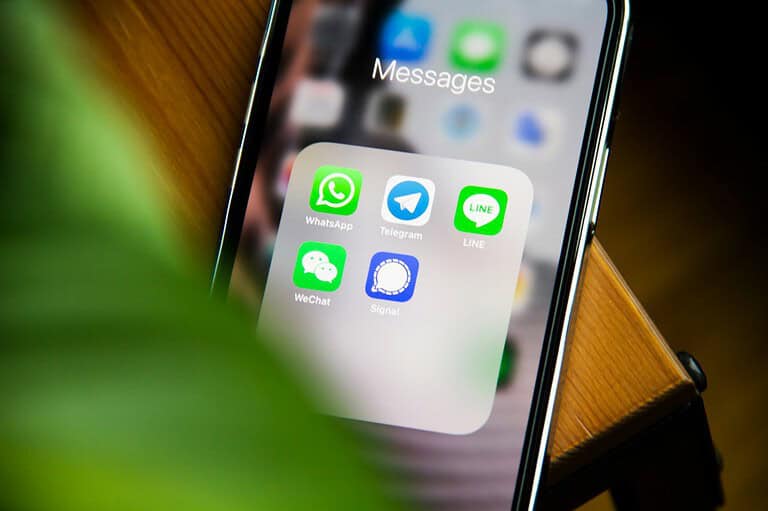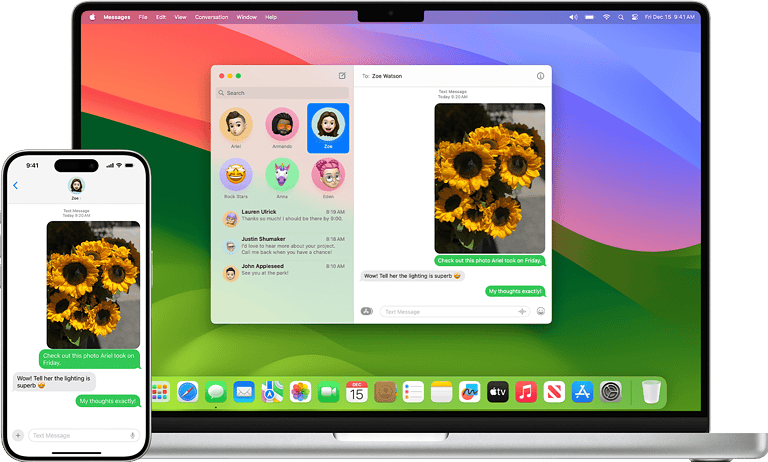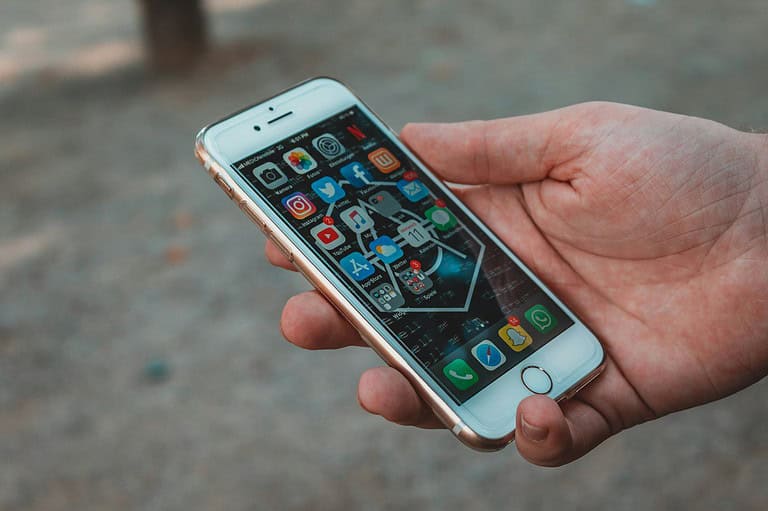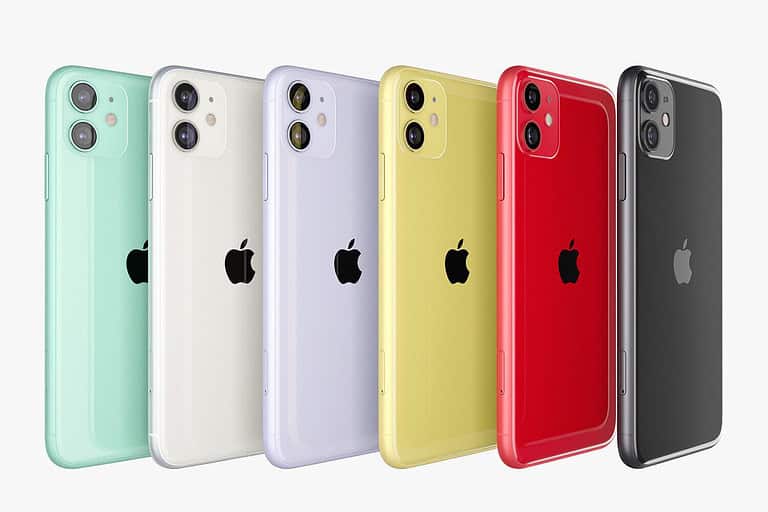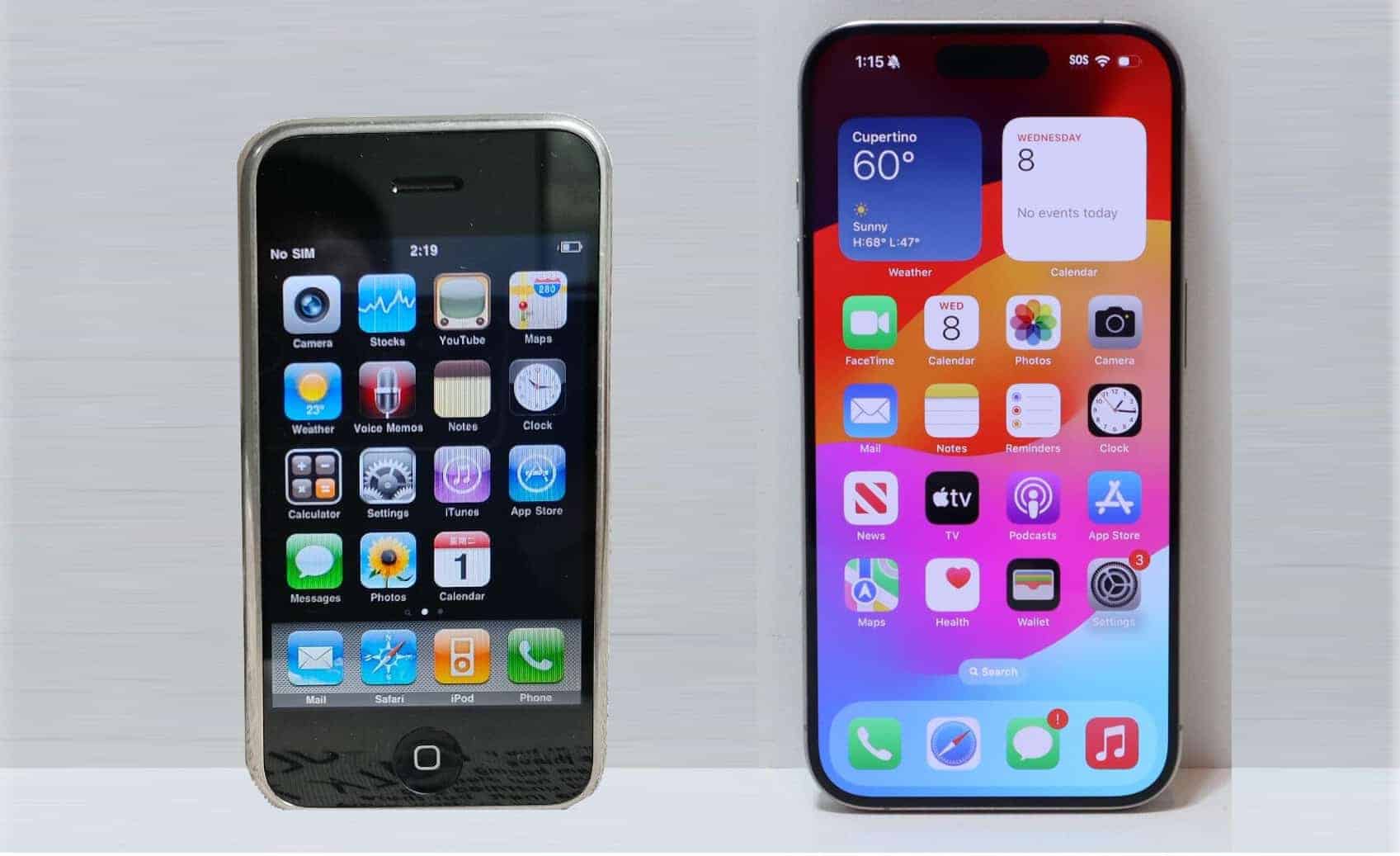
The iPhone started as a simple touchscreen phone and has become a powerful pocket computer, revolutionizing how we communicate, work, and play. It’s a result of Apple’s continuous innovation and its ability to anticipate and shape our technological needs. Since its launch in 2007, the iPhone has gone through significant changes, introducing new features, better capabilities, and a relentless pursuit of technological advancement.
The iPhone merged an iPod, a phone, and an internet communicator into a single product, triggering a rapid transformation in personal technology. Apple has consistently enhanced the iPhone with faster processors, advanced camera systems, and software innovations, which have become benchmarks in the industry. This continuous evolution has greatly influenced consumer expectations of what a smartphone should be, creating a competitive market where constant improvement is the norm. This article explores the journey of the iPhone from its inception to the present day, highlighting key milestones and innovations that have shaped the smartphone landscape.
A Legacy of Innovation: The iPhone’s Impactful Journey
2007: The Birth of a Revolution
| Model | Notable Features |
|---|---|
| iPhone (1st generation) | Touchscreen interface, visual voicemail, mobile web browser |
This is the year Apple forever changed the mobile landscape. The first iPhone combined a phone, iPod, and internet communicator into one device. This groundbreaking device introduced the world to the revolutionary multi-touch interface. It had no physical keyboard, just a large touchscreen.
2008-2010: Expanding Horizons
| Model | Notable Features |
|---|---|
| iPhone 3G | 3G connectivity, App Store, GPS |
| iPhone 3GS | Faster performance, video recording, voice control |
| iPhone 4 | Retina display, FaceTime, 5MP camera with LED flash |
The iPhone 3G brought the game-changing App Store and faster 3G speeds. A year later, the iPhone 3GS improved speed and added video recording. The iPhone 4, with its sleek design and high-resolution “Retina” display, was another huge leap forward. It also introduced FaceTime video calling.
2011-2014: Bigger and Better
| Model | Notable Features |
|---|---|
| iPhone 4S | Siri, iCloud, 8MP camera |
| iPhone 5 | Larger 4-inch display, LTE, Lightning connector |
| iPhone 5S | Touch ID fingerprint sensor, 64-bit A7 chip, slow-motion video |
| iPhone 5C | Colorful plastic body, similar features to iPhone 5 |
| iPhone 6/6 Plus | Even larger displays (4.7 and 5.5 inches), Apple Pay, improved cameras |
The iPhone 4S introduced Siri, Apple’s voice assistant. The iPhone 5 brought a larger display and faster LTE connectivity. The iPhone 5S was the first with a fingerprint sensor (Touch ID), and the iPhone 6 and 6 Plus models offered even larger screens.
2015-2019: Refinement and Innovation
| Model | Notable Features |
|---|---|
| iPhone 6S/6S Plus | 3D Touch, Live Photos, 12MP camera |
| iPhone SE (1st generation) | Smaller 4-inch design, similar features to iPhone 6S |
| iPhone 7/7 Plus | Dual cameras (on 7 Plus), water resistance, no headphone jack |
| iPhone 8/8 Plus | Glass back for wireless charging, faster A11 Bionic chip |
| iPhone X | OLED display, Face ID, edge-to-edge design |
| iPhone XR/XS/XS Max | XR: Liquid Retina display, single camera; XS/XS Max: OLED displays, dual cameras |
Apple continued to improve cameras and displays. The iPhone 7 Plus had dual rear cameras, and the iPhone X introduced Face ID facial recognition and an all-screen design. The iPhone XR offered a more affordable option with a single camera and LCD screen.
2020-2023: Desktop Power In Your Pocket
| Model | Notable Features |
|---|---|
| iPhone 11/11 Pro/11 Pro Max | Triple cameras (on Pro models), Night mode, U1 chip for spatial awareness |
| iPhone SE (2nd generation) | A13 chip, Touch ID, similar design to iPhone 8 |
| iPhone 12/12 mini/12 Pro/12 Pro Max | 5G, MagSafe, Super Retina XDR displays, A14 chip |
| iPhone 13/13 mini/13 Pro/13 Pro Max | Smaller notch, improved cameras, Cinematic mode, A15 chip |
| iPhone SE (3rd generation) | A15 chip, 5G, similar design to SE (2nd generation) |
| iPhone 14/14 Plus/14 Pro/14 Pro Max | Emergency SOS via satellite, Action button (Pro models), Photonic Engine |
| iPhone 15/15 Plus/15 Pro/15 Pro Max | USB-C port, A17 Bionic chip (Pro models), 48 MP main camera (Pro models) |
The iPhone 12 series brought 5G and MagSafe accessories. The iPhone 13 series improved cameras and added Cinematic mode for video. In 2023, Apple introduced the iPhone 14 series with Emergency SOS via satellite and the iPhone 15 series, featuring a USB-C port and upgraded cameras and chipsets.
2024 and Beyond: The AI Generation
| Model | Notable Features |
|---|---|
| iPhone 16/16 Plus/16 Pro/16 Pro Max | Enhanced A18 Bionic chip with dedicated AI core, AI-powered camera and photo editing features, improved battery life, potential for under-display Face ID |
The iPhone 16 series is poised to usher in a new era for the iPhone, where AI takes center stage. The enhanced A18 Bionic chip, with its dedicated AI core, will enable advanced machine learning capabilities, powering features like intelligent photography, personalized recommendations, and improved Siri interactions. The AI-powered camera system will allow users to capture stunning photos and videos, while the improved battery life will keep the device running longer. Additionally, rumors suggest the potential for under-display Face ID, further streamlining the iPhone’s design. With these innovations, the iPhone 16 series is set to solidify Apple’s position at the forefront of smartphone technology.
Evolution of the iPhone
| Year | Model(s) | Key Features |
|---|---|---|
| 2007 | iPhone (Original) | Multi-touch screen, App Store, revolutionized mobile user interface |
| 2008 | iPhone 3G | Faster 3G cellular data, GPS |
| 2009 | iPhone 3GS | Improved speed, video recording |
| 2010 | iPhone 4 | Retina Display (higher resolution), FaceTime video calling, new design |
| 2011 | iPhone 4s | Siri virtual assistant, improved camera |
| 2012 | iPhone 5 | Larger screen (4-inch), Lightning connector, LTE cellular data |
| 2013 | iPhone 5s/5c | Touch ID fingerprint sensor (5s), colorful plastic design (5c) |
| 2014 | iPhone 6/6 Plus | Larger screens (4.7-inch and 5.5-inch), new curved design |
| 2015 | iPhone 6s/6s Plus | 3D Touch (pressure-sensitive screen), improved cameras |
| 2016 | iPhone 7/7 Plus | Water resistance, dual cameras (7 Plus), removal of headphone jack |
| 2017 | iPhone X | Bezel-less design, Face ID facial recognition, OLED display |
| 2018 | iPhone XS/XS Max/XR | Faster processors, improved cameras, lower-cost XR model |
| 2019 | iPhone 11/11 Pro/11 Pro Max | Triple camera system (Pro models), Night Mode photography |
| 2020 | iPhone 12/12 mini/12 Pro/12 Pro Max | 5G connectivity, flat-edge design refresh, MagSafe accessories |
| 2021 | iPhone 13/13 mini/13 Pro/13 Pro Max | Upgraded cameras, smaller display notch, Cinematic Mode video |
| 2022 | iPhone 14/14 Plus/14 Pro/14 Pro Max | Dynamic Island (replaces notch on Pro), car crash detection, satellite emergency SOS |
| 2023 | iPhone 15/15 Plus/15 Pro/15 Pro Max | USB-C charging, improved camera (particularly zoom capabilities), potential periscope lens (Pro Max) |
| 2024 | iPhone 16/16 Plus/16 Pro/16 Pro Max | Larger Pro models, a dedicated camera button, powerful A18 Bionic chip. Full integration with Apple Intelligence. |
Important Notes:
- This table simplifies a complex history. There are nuances within each model year.
- “Key Features” highlights major introductions but doesn’t capture all improvements.
- The iPhone continues to evolve, so expect future updates!
Key Takeaways
- The iPhone has shaped the smartphone industry since its first launch by Apple in 2007.
- Successive models of the iPhone have focused on refining features and improving user experience.
- The evolution of the iPhone continues to influence the direction of future smartphone development.
The Genesis and Transformation of the iPhone
The evolution of the iPhone reflects a blend of design refinements and leaps in technology from its origin to its latest models.
Origins of Apple’s Innovation
The journey began in 2007 with Steve Jobs unveiling the original iPhone, a device that revolutionized the smartphone industry. This first iPhone, simply known as iPhone, introduced a multi-touch interface and combined a phone, an iPod, and an internet communicator into one.
iPhone Design Evolution
From the debut of its aluminum form factor with the iPhone 5 to the sharp, stainless steel edges of the iPhone 4 and the iPhone 4s, each model has seen subtle adjustments. The dramatic shift to larger screens and glass bodies began with the iPhone 6 and continued through to the iPhone 8. The iPhone X marked a redesign with its edge-to-edge OLED display, ditching the home button.
Technological Advancements in Hardware and Software
Each generation of iPhone brought with it improvements to the internal hardware and software. Starting with the A-Series chips that powered devices from the iPhone 4 onwards, to the introduction of Siri on the iPhone 4s. The operating system, iOS, has evolved alongside the hardware, maintaining a fluid user experience.
Rise of New Features and User Experience
As the iPhone matured, new features were consistently integrated. Siri provided a voice assistant from the iPhone 4s onward, and Apple introduced Touch ID with the iPhone 5s, followed by Face ID with the iPhone X. Subsequent models have added further improvements, like 3D Touch and wireless charging capabilities.
Network and Connectivity Improvements
Connectivity features have significantly evolved since the iPhone’s inception. The original iPhone only supported 2G networks, but the iPhone 3G introduced 3G connectivity, as the name implies. LTE came with the iPhone 5. Each iteration has also seen enhancements to GPS, Wi-Fi, and Bluetooth capabilities, maintaining the iPhone’s status as a leader in smartphone connectivity.
Through meticulous iterations, Apple has guided the iPhone from a pioneering gadget to a deeply entrenched part of modern life, illustrating the continuous march of technological progress.
Impact and Future Direction of the iPhone
The iPhone not only reshaped mobile phone design but also set new standards for mobile technology and user experience. This section explores its role in the market, adaptability to consumer trends, and the potential trajectory for its future.
Influence on the Smartphone Market
Apple’s iPhone has consistently driven innovation in the smartphone market. The iPhone’s introduction of the App Store in 2008 transformed the iPhone into a platform for millions of apps, affecting not only how consumers use their phones but also how developers create software. Notably, iPhone models such as the iPhone SE and iPhone XR catered to varying user needs, balancing performance with affordability. Competition from brands like Samsung with their Android-powered devices has fostered a dynamic market environment. Both companies push the boundaries of technology like the implementation of advanced front-facing cameras and portrait mode capabilities.
Evolving Consumer Trends and Apple’s Response
Consumer demand moves fast, and Apple has shown an ability to respond. For instance, the growing importance of battery life has led to iPhones with longer-lasting batteries, from the iPhone 13 Pro Max to the iPhone 14 Pro Max. Apple’s incremental updates often mirror user demand for enhancements in speed, camera quality, and device durability. In addressing environmental impact, Apple has also introduced initiatives to reduce waste and improve the sustainability of their devices.
Modern Power and Ai
There’s no question that the future of the iPhone hinges on its ability to deliver Ai and performance to Apple users and to stay at the forefront of innovation. The iPhone 15 Series (and in particular the iPhone 15 Pro) seemed to come out right on the cusp of this Ai integration and it remains to be seen how much Apple releases in that regard to these phones. The iPhone 16 series will fully embrace Ai and bring new cutting-edge developments to the mobile phone ecosystem. Alongside ever-improving hardware like camera technology, data speeds, etc., the Ai capabilities of smartphones will be how we define them going forward.
Frequently Asked Questions
This section addresses common inquiries regarding the iPhone’s history, its progression in technology, and comparisons between models.
What are the names of the models in the chronological timeline of iPhone releases?
Apple’s iPhone lineup began with the original iPhone released in 2007. Subsequent models include the iPhone 3G, 3GS, 4, 4S, 5, 5C, 5S, 6, 6 Plus, 6S, 6S Plus, SE, 7, 7 Plus, 8, 8 Plus, X, XR, XS, XS Max, 11, 11 Pro, 11 Pro Max, SE (2nd generation), 12, 12 Mini, 12 Pro, 12 Pro Max, 13, 13 Mini, 13 Pro, 13 Pro Max, and most recently, the iPhone 14 series up to the current model as of early 2024.
How have the technical specifications evolved from the first iPhone to the current iPhone?
The first iPhone featured a 3.5-inch display and a 2MP camera. Today’s models boast larger, high-resolution screens, multi-lens camera systems capable of professional-quality photography, and powerful processors that handle complex tasks and graphics with ease.
Which iPhone models feature water resistance or waterproof capabilities?
Starting with the iPhone 7 and 7 Plus, iPhones received an official water resistance rating of IP67, and further models have continued this trend, some reaching an IP68 rating, suggesting they can withstand immersion in water to varying depths for certain periods.
Which models are considered the most reliable iPhones to date?
While each iPhone model is built to high standards, the iPhone 6S and SE are frequently praised for their longevity. The more recent iPhone 11 and iPhone 12 series are also noted for their durability and reliable performance.
How does the current iPhone model compare to its predecessors in terms of performance and features?
The current iPhone model showcases a leap in processing power, improved battery life, and advanced features like 5G connectivity, enhanced camera systems with LiDAR technology, and sophisticated display technology offering smoother navigation and vibrant visuals compared to previous models.
What was the very first model of the iPhone called upon its release?
The initial model introduced by Apple in 2007 was simply called the iPhone. It marked the beginning of Apple’s foray into the smartphone market, setting the stage for more than a decade of innovation and development in mobile phone technology.

